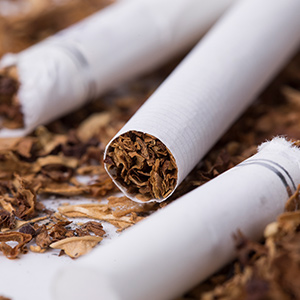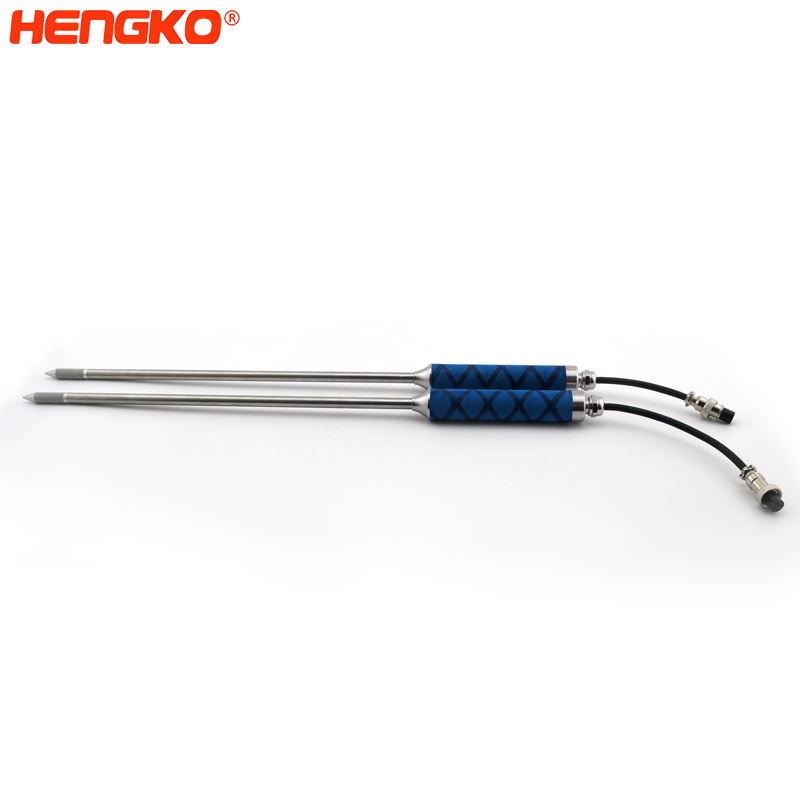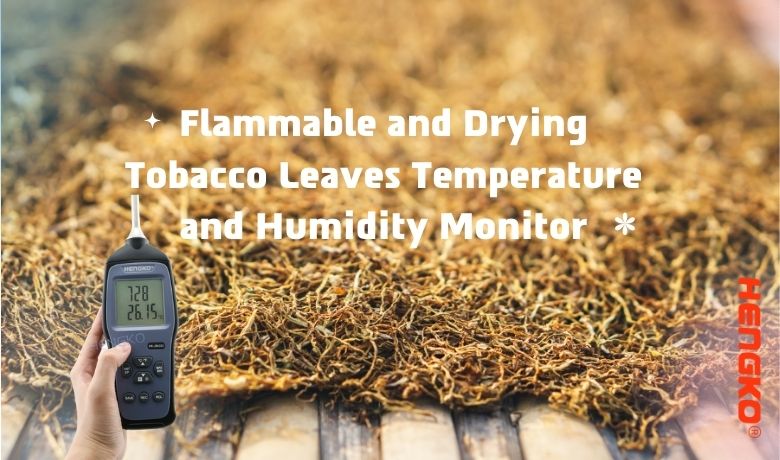
Tobacco is a sensitive product that requires specific storage conditions to maintain its quality. One of the most critical factors to consider when storing tobacco leaves is the temperature and humidity levels. When exposed to extreme temperatures and humidity, tobacco leaves can become flammable, which poses a significant safety risk. Additionally, high humidity levels can lead to the growth of mold and other microorganisms that can negatively affect the quality of the tobacco leaves. In this blog post, we will discuss how to monitor temperature and humidity quality for flammable and drying tobacco leaves.
Understanding the Ideal Temperature and Humidity Levels for Flammable and Drying Tobacco Leaves
Before we dive into the specifics of monitoring temperature and humidity, it is essential to understand the ideal ranges for these factors. The ideal temperature for storing tobacco leaves is between 60°F and 70°F (15°C and 21°C), with a relative humidity level of 65%-75%. It is crucial to maintain these ranges consistently to prevent the tobacco leaves from becoming flammable and to maintain their quality.
When temperatures are too high, tobacco leaves can dry out and become brittle, which can result in a loss of flavor and aroma. On the other hand, when temperatures are too low, the tobacco leaves can become moist, making them prone to mold growth. Similarly, when the humidity level is too high, it can promote mold and bacterial growth, which can damage the tobacco leaves' quality. Conversely, when the humidity level is too low, the tobacco leaves can dry out, resulting in a loss of flavor and aroma.
Choosing the Right Temperature and Humidity Monitoring Equipment
To maintain ideal temperature and humidity levels for tobacco leaves, you need the right equipment to monitor them. Several types of equipment are available for temperature and humidity monitoring, each with its pros and cons.
Data Loggers
Data loggers are small, portable devices that continuously monitor and record temperature and humidity levels. They are ideal for monitoring temperature and humidity in multiple locations simultaneously. Data loggers typically have a battery life of several months to a few years, depending on the device's specifications.
Data loggers are a reliable choice for monitoring temperature and humidity levels, but they can be expensive compared to other monitoring equipment. Additionally, data loggers do not provide real-time data, which means you need to collect the device and download the data to analyze it manually.
Thermometers and Hygrometers
Thermometers and hygrometers are simple devices that measure temperature and humidity levels. They are typically less expensive than data loggers and can provide real-time data, making them an excellent choice for monitoring temperature and humidity in a single location.
The main disadvantage of thermometers and hygrometers is that they do not record data over time, which means you need to record the readings manually. Additionally, they are not ideal for monitoring temperature and humidity in multiple locations.
Smart Sensors
Smart sensors are wireless devices that monitor temperature and humidity levels and transmit real-time data to a central monitoring system. They are ideal for monitoring temperature and humidity in multiple locations and provide real-time data, making it easy to identify and address issues quickly.
The main disadvantage of smart sensors is their cost, which can be higher than other monitoring equipment. Additionally, smart sensors require a reliable wireless network, which may not be available in all locations.
When selecting the most appropriate equipment for monitoring temperature and humidity levels for flammable and drying tobacco leaves, you should consider the number of locations you need to monitor, the cost of the equipment, and the features you require.
Monitoring and Maintaining Temperature and Humidity Levels
Once you have the right equipment to monitor temperature and
humidity levels, the next step is to ensure that you are maintaining ideal ranges consistently. Here are some best practices for monitoring and maintaining temperature and humidity levels for flammable and drying tobacco leaves:
Regular Monitoring
Regular monitoring is crucial to maintaining the ideal temperature and humidity levels for tobacco leaves. Depending on the equipment you are using, you should monitor temperature and humidity levels at least once a day, if not more frequently. This will allow you to identify any fluctuations and address them promptly.
Addressing Issues Quickly
If you notice any fluctuations in temperature or humidity levels, it is essential to address them as quickly as possible. Small fluctuations may not seem significant, but they can quickly lead to larger issues if left unchecked. For example, if the humidity level in a storage area is too high, it can quickly promote mold growth, which can damage the quality of the tobacco leaves.
Proper Ventilation
Proper ventilation is essential to maintaining ideal temperature and humidity levels for tobacco leaves. Without adequate ventilation, the air in the storage area can become stagnant, which can promote mold growth and other issues. Make sure that your storage area has adequate ventilation to promote air circulation and maintain ideal temperature and humidity levels.
Humidity Control
Controlling humidity levels is critical to maintaining the quality of tobacco leaves. If the humidity level is too high, it can promote mold growth and other microorganisms that can damage the tobacco leaves. Conversely, if the humidity level is too low, the tobacco leaves can dry out, which can result in a loss of flavor and aroma.
One way to control humidity levels is to use a dehumidifier. A dehumidifier will remove excess moisture from the air, helping to maintain ideal humidity levels. Make sure to choose a dehumidifier that is appropriately sized for your storage area.
Creating a Temperature and Humidity Monitoring Plan
Creating a temperature and humidity monitoring plan is essential to maintaining the quality of flammable and drying tobacco leaves. Here are the steps you should take to create a monitoring plan:
Identify Critical Control Points
The first step in creating a monitoring plan is to identify critical control points (CCPs) in the storage process. CCPs are points in the process where the temperature or humidity levels can have a significant impact on the quality of the tobacco leaves. For example, the storage area may be a CCP, as it is where the tobacco leaves are stored.
Determine Monitoring Frequency
Once you have identified CCPs, you need to determine how frequently you will monitor temperature and humidity levels at each point. The monitoring frequency will depend on the equipment you are using and the specific requirements of your storage process.
Establish Procedures for Corrective Action
In the event that you identify a deviation from ideal temperature or humidity levels, you need to establish procedures for corrective action. This may involve adjusting the storage conditions or taking other corrective actions to maintain the quality of the tobacco leaves.
Record Keeping
It is essential to keep records of temperature and humidity levels to track deviations and ensure that corrective actions are taken when necessary. You should keep records of monitoring results, corrective actions taken, and any other relevant information.
Tobacco is familiar due to the cigarette. As we all know, smoking is harmful to health. According to the modern science research, at least 40 alkaloids can be isolated from tobacco that have a vital medicinal value.
The tobacco storage warehouse adopts stacking to storage the tobacco. This method will rise the temperature of tobacco even lead to a fire. HENGKO suggests monitoring the temperature and humidity of the
tobacco storage warehouse and keeps the indoor temperature below 25℃, the humidity between 60-65%RH that ensure the quality and safety of tobacco.
Regular check the moisture of the Tobacco heap. Spot-check according the tobacco origin and level so that take action on time if finding problem. HENGKO HK-J8A102 temperature and humidity meter is ideal select for the dense tobacco heap. It can insert to the tobacco heap to measure the temperature humidity with stainless steel extension tip probe. HENGKO temperature and humidity meter has HD display, and it can measure the humidity, temperature, dew point temperature and wet bulb temperature at the same time.
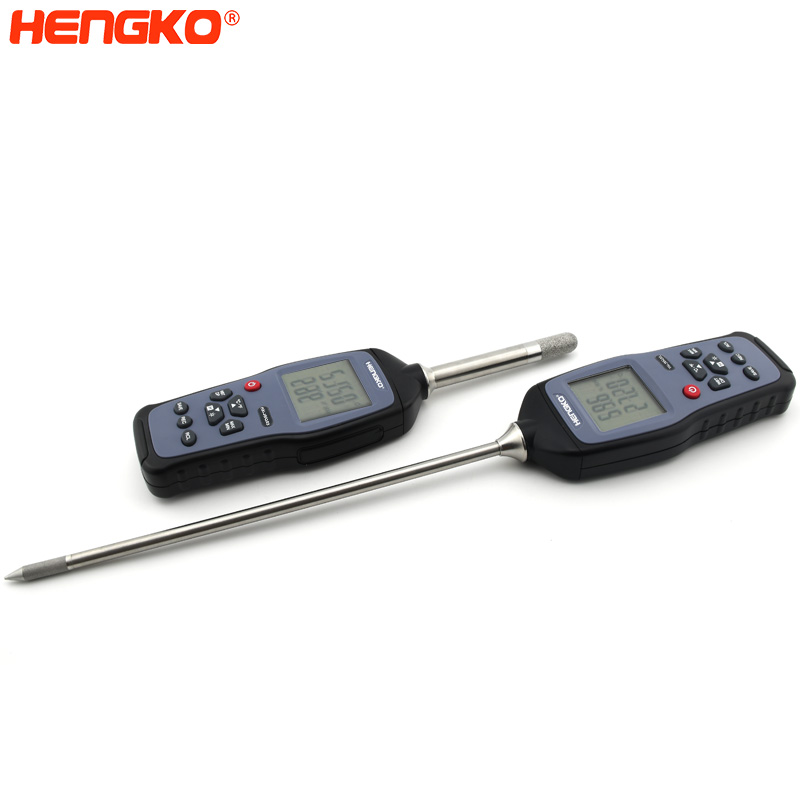
In addition, HENGKO temperature and humidity housing has advantage of heat-resistance, corrosion resistance, general acid and base resistance, long service time and high strength. With the customized length extension probe to realized the most accurate measurement of tobacco heap.
Temperature and humidity monitor is not only ensure the quality of tobacco warehouse but also the fire safety. It is essential to built a tobacco warehouse temperature and humidity monitor system. HENGKO tobacco warehouse IOT system provide the 7/24/365 data automatic data collection, recording and storage. HENGKO has various types of wall-mount hardware and easy to use & install. Want to get the real time temperature and humidity data and save labor cost? Just install the multiple t/H transmitters at fixed points in the warehouse that can receive the t/H data of tobacco warehouse from PC or app.
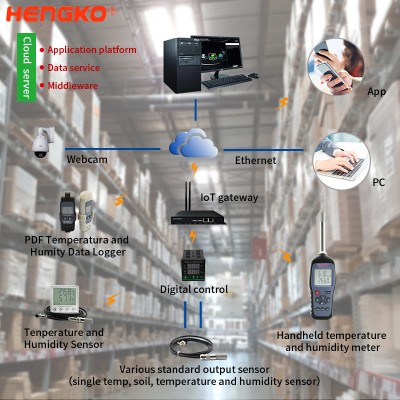
Temperature and humidity monitor is important for any warehouse. Making use of big data and modern technology is the time-saving and cost-saving monitoring method. HENGKO warehouse temperature and humidity iot solution is not only Improve the efficiency, but also ensure the enterprise's production and property safety.
FAQ about Temperature and Humidity Monitor
Q: Why is monitoring temperature and humidity levels important for flammable and drying tobacco leaves?
A: Monitoring temperature and humidity levels is important for flammable and drying tobacco leaves because these factors can have a significant impact on the quality of the tobacco leaves. If the temperature is too high, it can cause the tobacco leaves to dry out too quickly, which can result in a loss of flavor and aroma. On the other hand, if the temperature is too low, it can slow down the drying process, which can result in mold growth and other issues. Similarly, if the humidity level is too high, it can promote mold growth and other microorganisms that can damage the tobacco leaves. Conversely, if the humidity level is too low, the tobacco leaves can dry out, which can result in a loss of flavor and aroma.
Q: What equipment do I need to monitor temperature and humidity levels for tobacco leaves?
A: There are various types of equipment available for monitoring temperature and humidity levels for tobacco leaves. One option is to use a digital thermometer and hygrometer, which can provide accurate readings of temperature and humidity levels. Another option is to use data loggers, which can continuously monitor temperature and humidity levels and provide detailed reports. Some advanced data loggers even allow you to set up alarms to alert you when temperature or humidity levels deviate from ideal ranges.
Q: What are the ideal temperature and humidity levels for flammable and drying tobacco leaves?
A: The ideal temperature and humidity levels for flammable and drying tobacco leaves will depend on various factors, including the specific type of tobacco leaves, the drying process, and the storage conditions. Generally, the ideal temperature for drying tobacco leaves is between 60°F and 80°F (15.5°C and 26.7°C), and the ideal humidity level is between 60% and 70%. However, it is important to consult with industry experts and conduct testing to determine the ideal temperature and humidity levels for your specific needs.
Q: How often should I monitor temperature and humidity levels for tobacco leaves?
A: The frequency of monitoring temperature and humidity levels for tobacco leaves will depend on various factors, including the specific type of tobacco leaves, the drying process, and the storage conditions. However, as a general rule, you should monitor temperature and humidity levels at least once a day, if not more frequently. This will allow you to identify any fluctuations and address them promptly.
Q: How can I maintain ideal temperature and humidity levels for tobacco leaves?
A: Maintaining ideal temperature and humidity levels for tobacco leaves requires a combination of proper equipment, regular monitoring, and appropriate corrective actions. One way to maintain ideal humidity levels is to use a dehumidifier to remove excess moisture from the air. Proper ventilation is also crucial to maintaining ideal temperature and humidity levels, as stagnant air can promote mold growth and other issues. In the event that you identify a deviation from ideal temperature or humidity levels, you need to establish procedures for corrective action, which may involve adjusting the storage conditions or taking other corrective actions to maintain the quality of the tobacco leaves.
Q: Why is record-keeping important for monitoring temperature and humidity levels for tobacco leaves?
A: Record-keeping is important for monitoring temperature and humidity levels for tobacco leaves because it allows you to track deviations and ensure that corrective actions are taken when necessary. By keeping records of monitoring results, corrective actions taken, and any other relevant information, you can identify patterns and trends and take proactive steps to maintain the quality of your tobacco leaves. Additionally, record-keeping is often required by regulatory agencies and can help you demonstrate compliance with industry standards
Q: What are the potential consequences of not monitoring temperature and humidity levels for tobacco leaves?
A: Failing to monitor temperature and humidity levels for tobacco leaves can result in various negative consequences. For example, if the temperature is too high, the tobacco leaves can dry out too quickly, which can result in a loss of flavor and aroma. If the humidity level is too high, it can promote mold growth and other microorganisms that can damage the tobacco leaves. Conversely, if the humidity level is too low, the tobacco leaves can dry out, which can result in a loss of flavor and aroma. In some cases, failure to monitor temperature and humidity levels can even result in a fire or other safety hazard.
Q: Can I use a smartphone app to monitor temperature and humidity levels for tobacco leaves?
A: Yes, there are various smartphone apps available that can be used to monitor temperature and humidity levels for tobacco leaves. However, it is important to ensure that the app is accurate and reliable before relying on it for monitoring purposes. Additionally, it is important to remember that a smartphone app may not provide the same level of detail and accuracy as specialized monitoring equipment, such as a digital thermometer and hygrometer or a data logger.
Q: How can I ensure that my monitoring equipment is calibrated and accurate?
A: To ensure that your monitoring equipment is calibrated and accurate, it is important to perform regular calibration checks. This involves comparing the readings from your monitoring equipment to a known standard and adjusting the equipment as necessary to ensure that the readings are accurate. Calibration checks should be performed on a regular basis, such as once a year or as recommended by the manufacturer. Additionally, it is important to properly maintain and care for your monitoring equipment to ensure that it continues to provide accurate readings over time.
Q: What should I do if I identify a deviation from ideal temperature or humidity levels for tobacco leaves?
A: If you identify a deviation from ideal temperature or humidity levels for tobacco leaves, it is important to take appropriate corrective action as soon as possible. This may involve adjusting the storage conditions, such as by increasing ventilation or using a dehumidifier to remove excess moisture from the air. In some cases, it may be necessary to remove the affected tobacco leaves from the storage area to prevent further damage. It is also important to document the deviation and any corrective actions taken, as this information can be useful for identifying patterns and trends and taking proactive steps to maintain the quality of your tobacco leaves.
Q: Can I use the same monitoring equipment for different types of tobacco leaves?
A: While some monitoring equipment may be suitable for use with multiple types of tobacco leaves, it is important to ensure that the equipment is appropriate for the specific type of tobacco leaves being monitored. Different types of tobacco leaves may have different ideal temperature and humidity levels, and may require different monitoring equipment to accurately measure these factors. It is important to consult with industry experts and conduct testing to ensure that the monitoring equipment being used is appropriate for your specific needs.
Conclusion
Maintaining ideal temperature and humidity levels is crucial to maintaining the quality of flammable and drying tobacco leaves. By choosing the right monitoring equipment, regularly monitoring temperature and humidity levels, addressing issues quickly, and creating a monitoring plan, you can ensure that your tobacco leaves remain in top condition. Following these best practices can help you avoid potential safety hazards and maintain the quality of your tobacco leaves, ensuring that they are of the highest quality for use in a variety of tobacco products.
Interested in learning more about temperature and humidity monitoring for tobacco leaves?
Check out our website for additional resources and expert advice on maintaining the quality of your tobacco leaves.
From selecting the right monitoring equipment to establishing an effective monitoring and maintenance schedule,
we've got you covered. Don't wait until it's too late - start taking proactive steps to protect your tobacco leaves today!
Post time: Aug-11-2021
